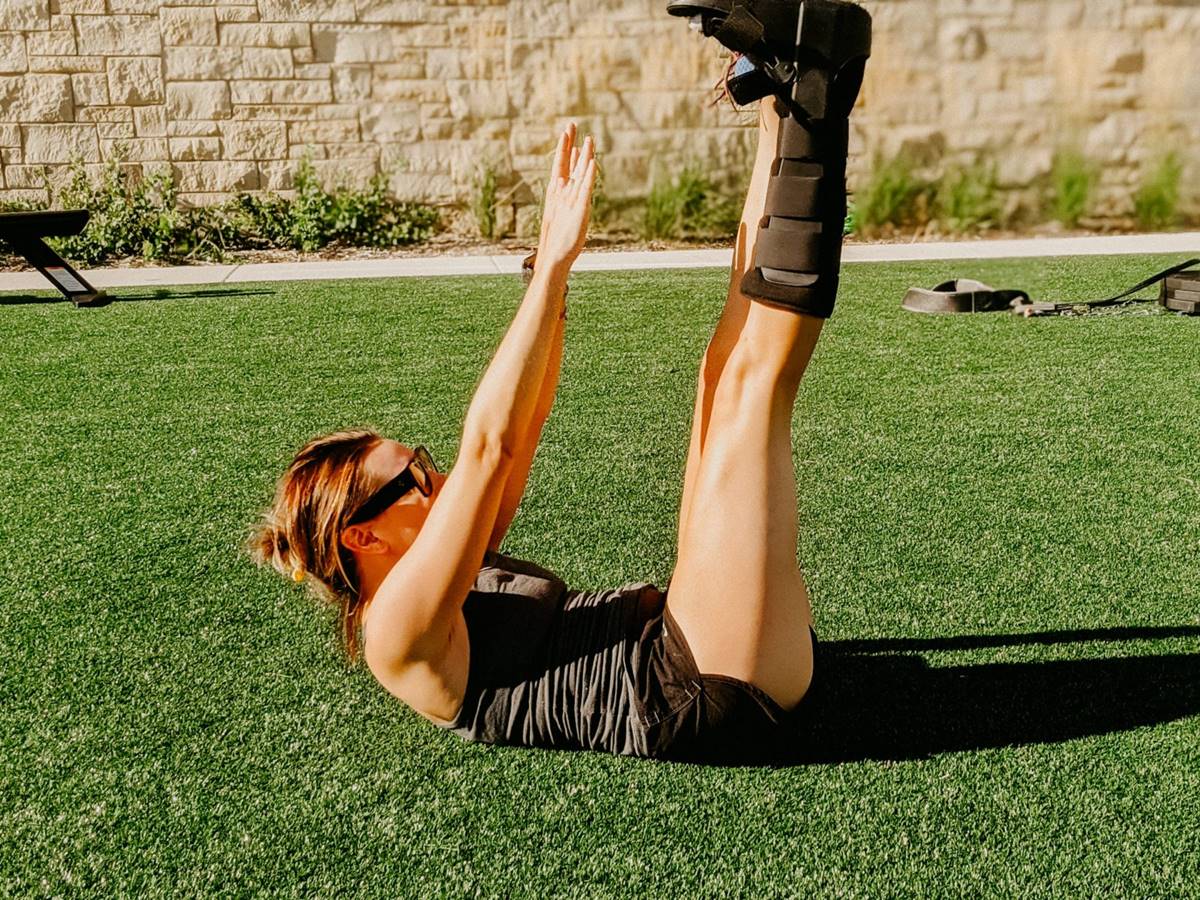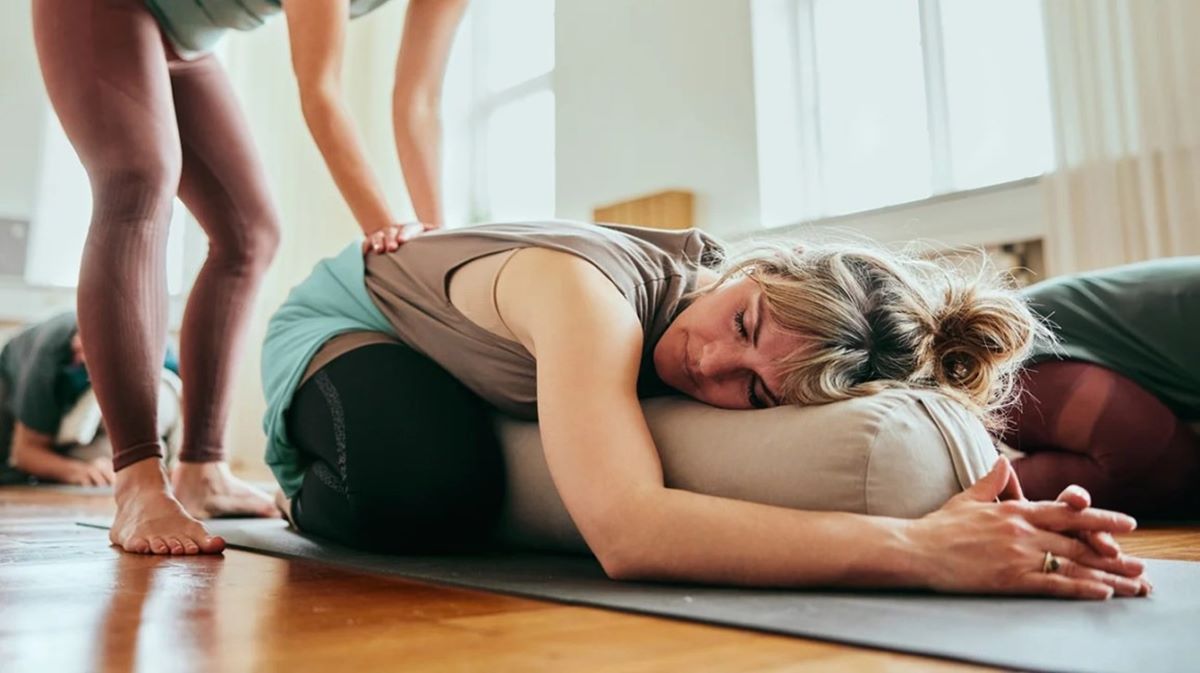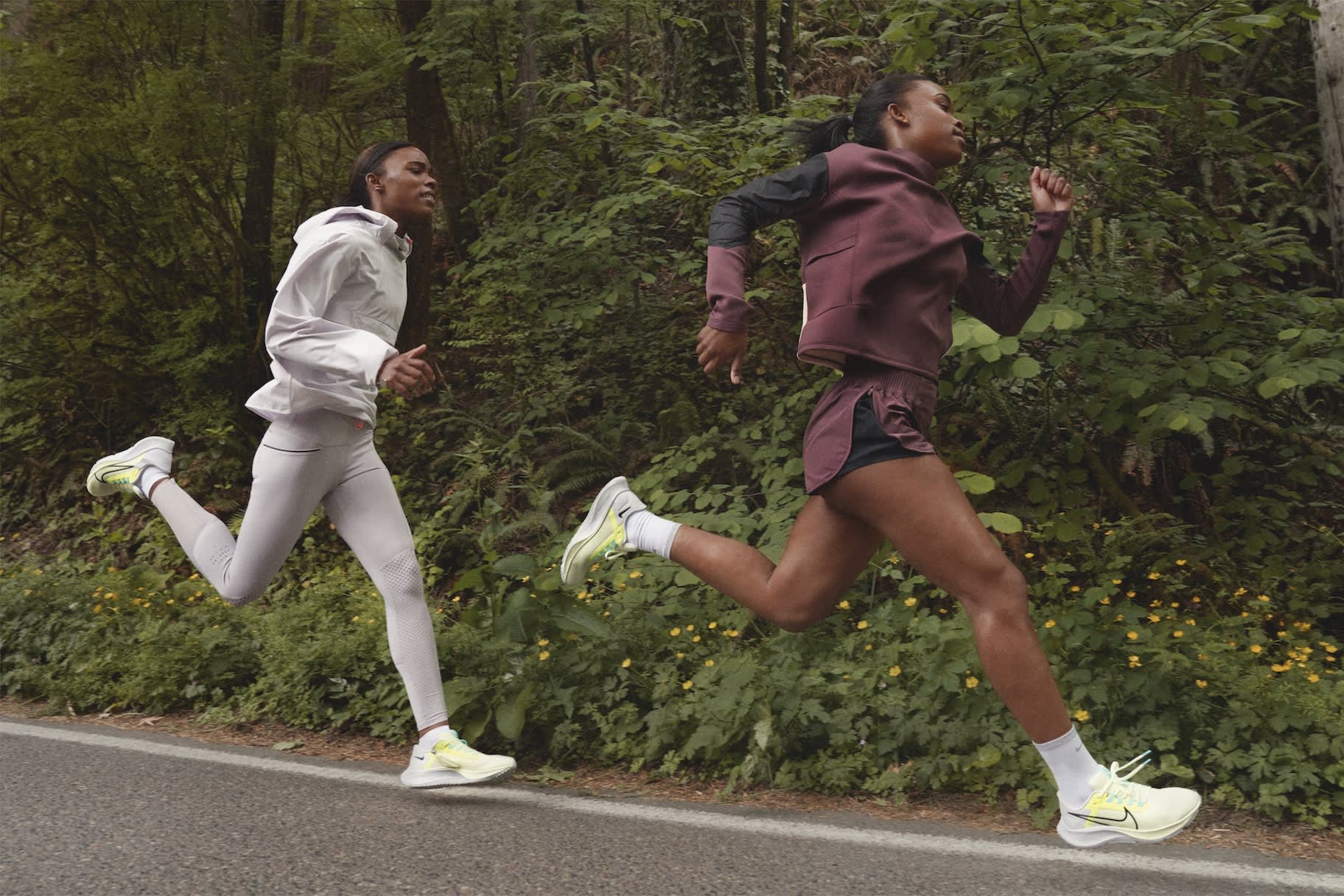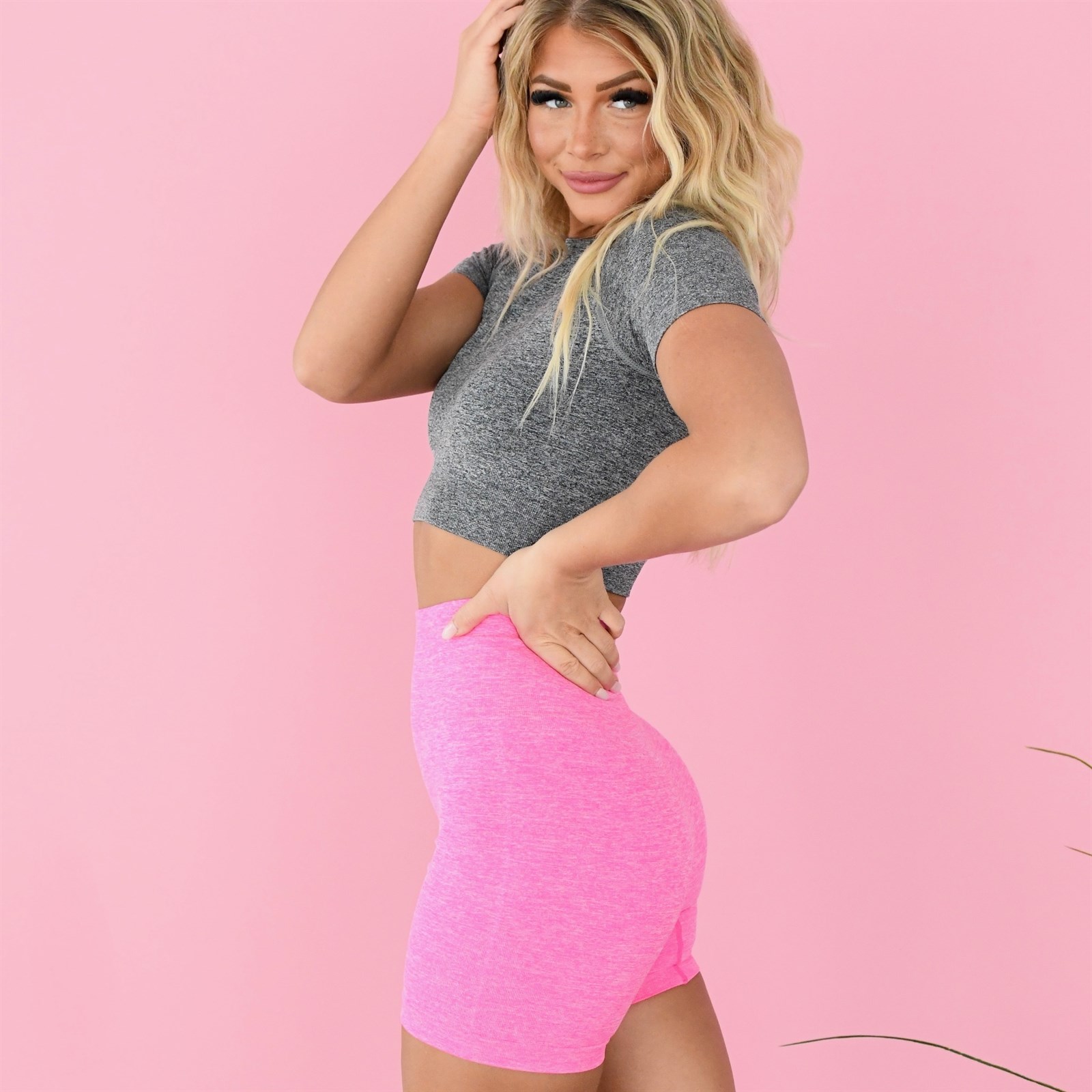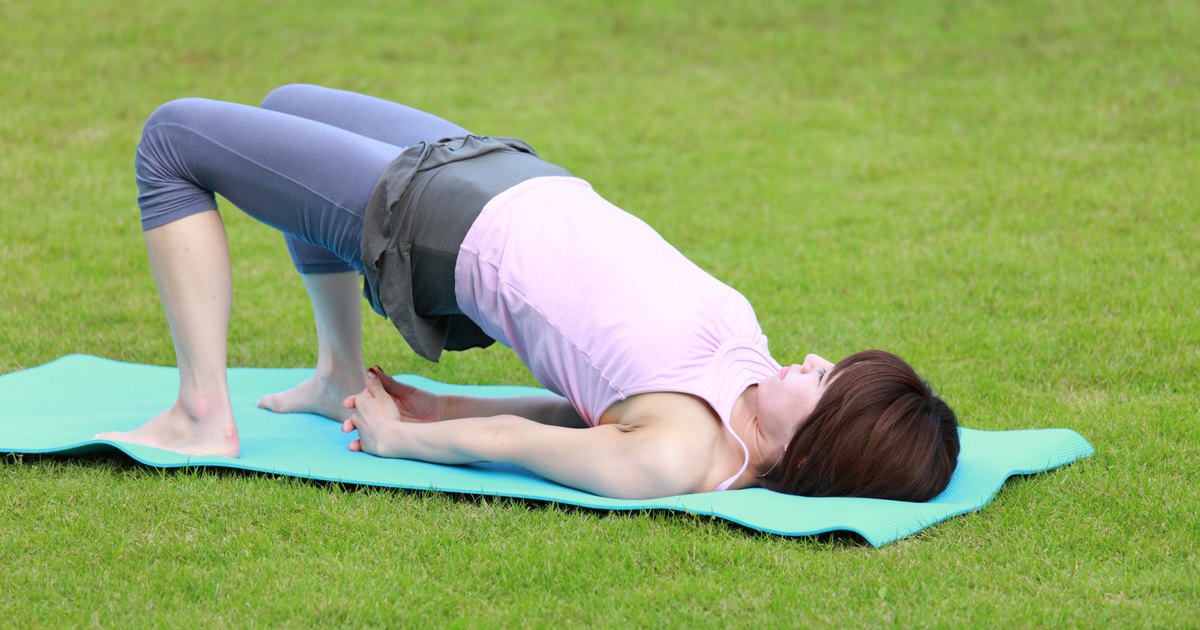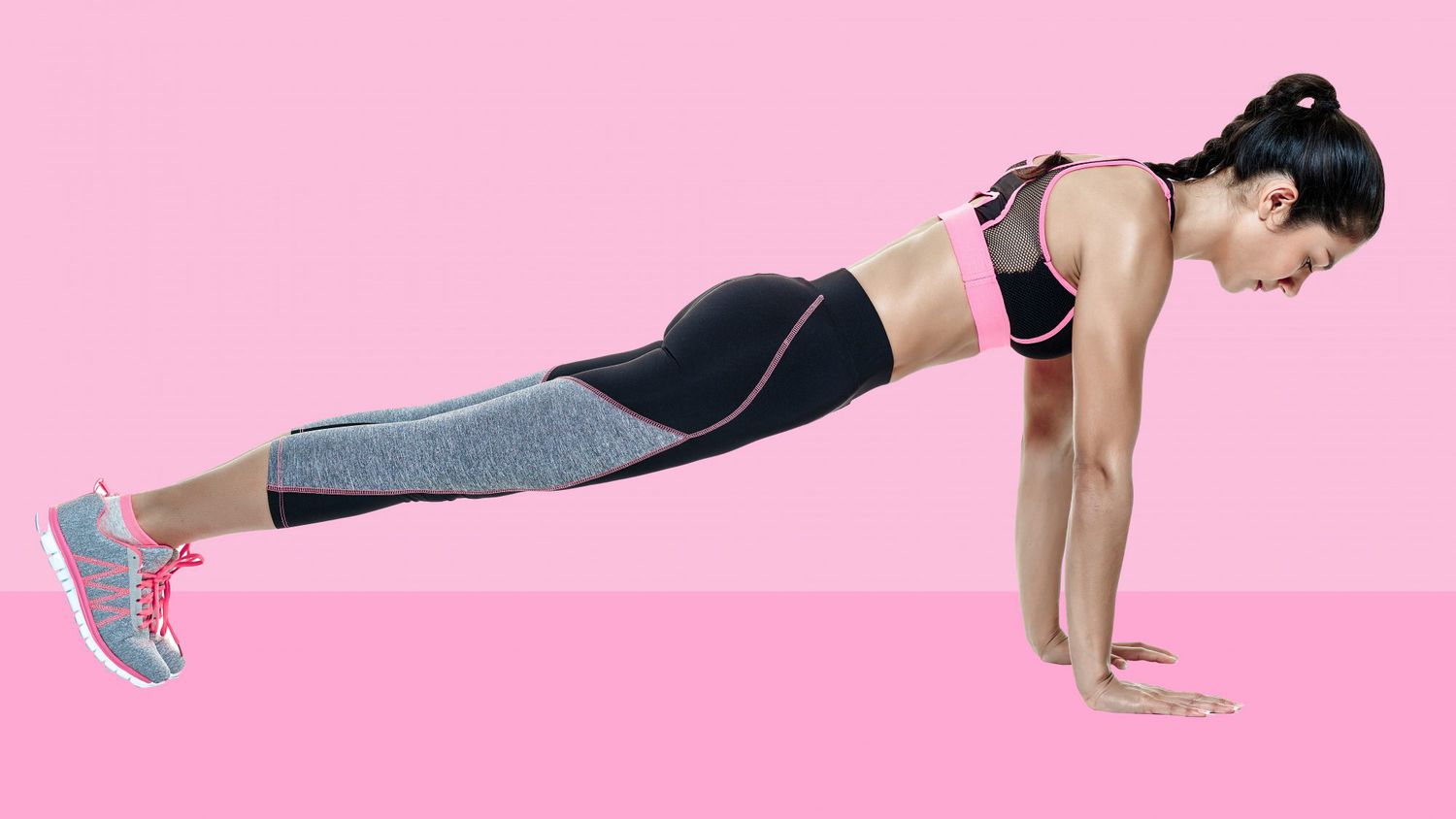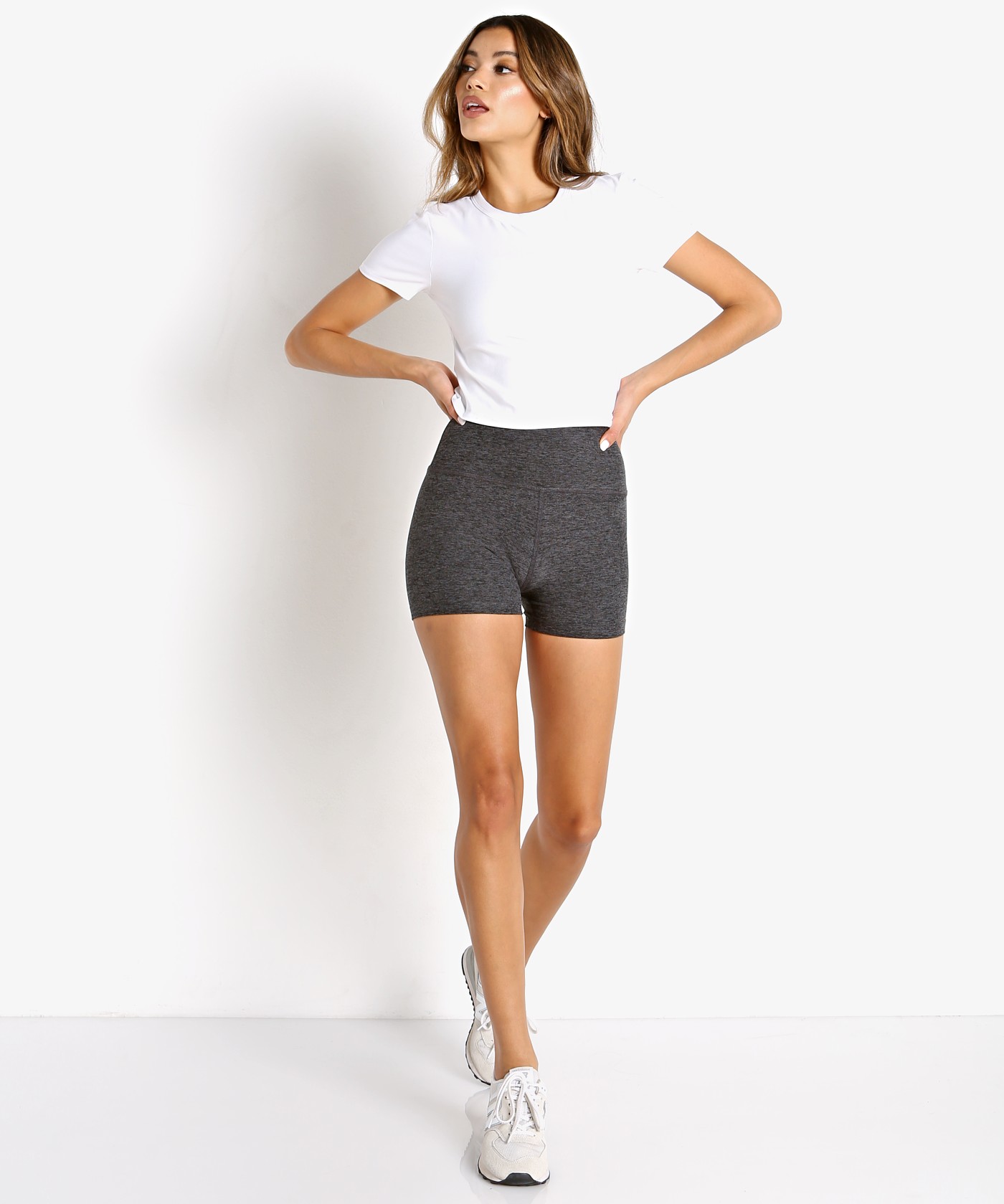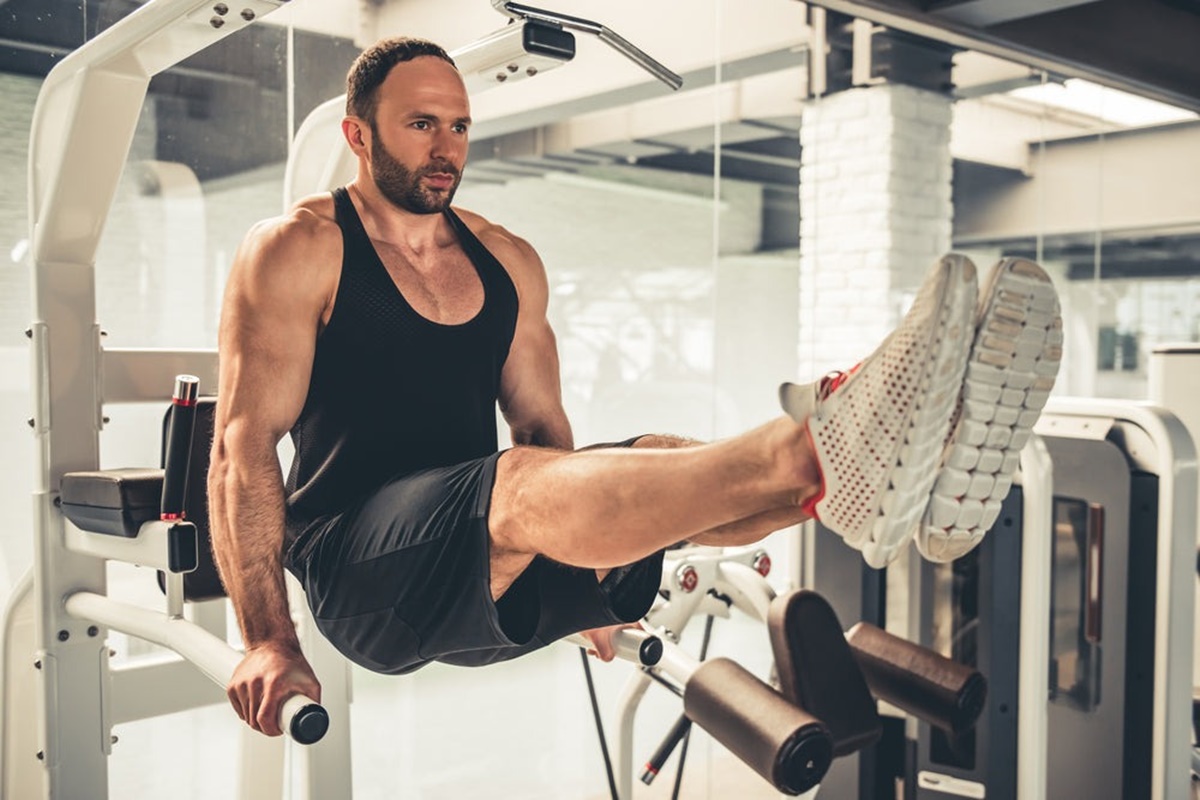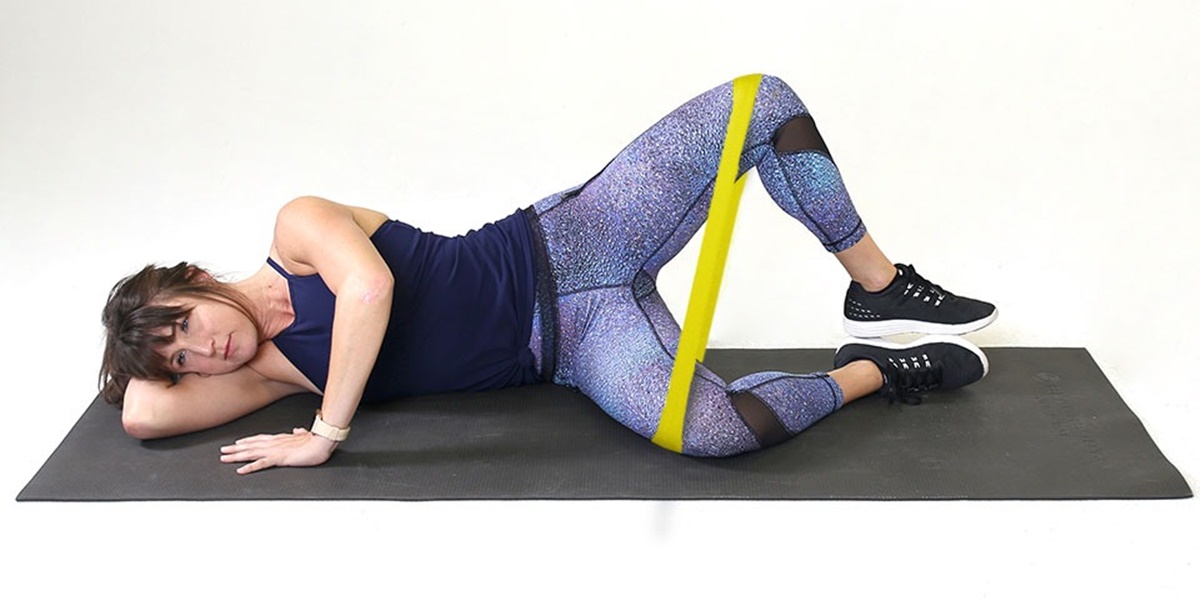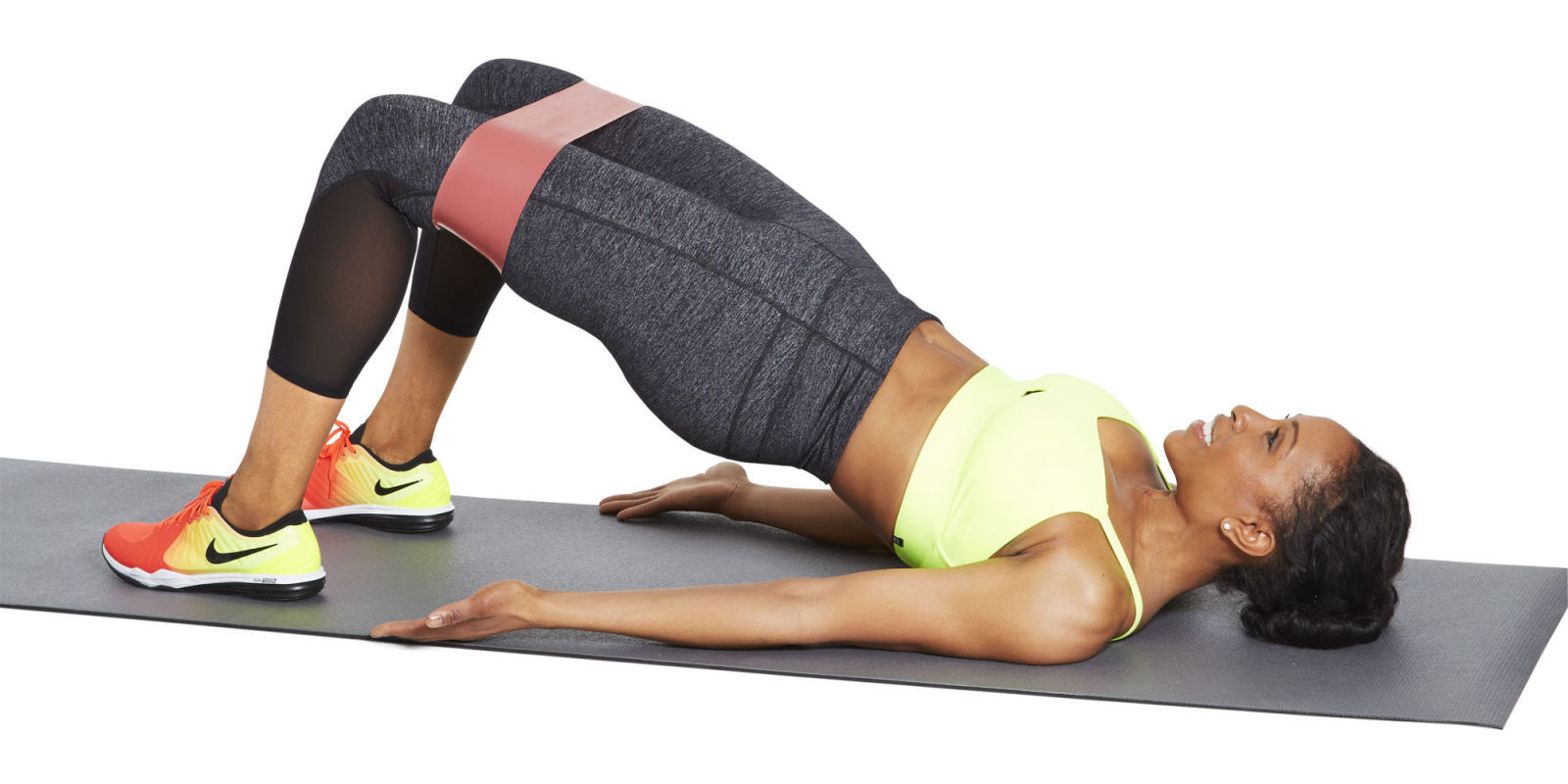

Featured
What Exercise Will Lift The Buttocks
Modified: January 2, 2024
Looking to lift your buttocks? Discover the featured exercise that will help you achieve a firmer and perkier posterior.
Introduction
Welcome to the world of fitness, where toned glutes and lifted buttocks are highly desired. A well-defined butt not only gives you confidence but also plays a crucial role in your overall physique. If you have been wondering how to achieve that perfect derriere, you’ve come to the right place.
Having strong and lifted buttocks is more than just an aesthetic goal. The gluteal muscles, which make up the buttocks, are the largest muscles in our bodies. They play a vital role in stabilizing the hips, supporting the lower back, and enhancing athletic performance.
However, achieving a lifted and sculpted booty takes more than wishful thinking. It requires a dedicated fitness routine that targets the glute muscles and incorporates specific exercises to strengthen and lift them.
In this article, we will discuss the importance of having strong glutes, the factors that affect the shape of your buttocks, and how exercise can help lift and tone this area. We will also explore the best exercises you can incorporate into your fitness routine to achieve a lifted and firm butt.
Whether you’re a fitness enthusiast looking to enhance your glute development or simply someone looking to improve overall physical strength, this article will provide you with the knowledge and exercises you need to achieve the buttocks of your dreams. Get ready to work and say hello to a perky posterior!
Importance of Strong Buttocks
Having strong buttocks is crucial for a variety of reasons beyond just appearance. The gluteal muscles play a vital role in supporting our body’s structure and functionality.
One of the primary benefits of strong glutes is improved posture. These muscles help stabilize the pelvis and support the spine, preventing issues such as lower back pain and poor posture. When the gluteal muscles are weak or underdeveloped, it can lead to a swayback posture, where the lower back curves excessively. Building strong glutes can help correct this imbalance and promote a more neutral, upright posture.
Additionally, strong glutes contribute to overall strength and power. These muscles are involved in various daily activities, such as walking, running, climbing stairs, and lifting heavy objects. When the glutes are weak, other muscles in the body compensate, leading to muscle imbalances and a greater risk of injury. By strengthening the buttocks, you ensure that the muscles responsible for these movements are functioning optimally and reducing the strain on other body parts.
Furthermore, strong glutes can enhance athletic performance. Many sports, such as sprinting, jumping, and squatting, heavily rely on the power generated by the gluteal muscles. By incorporating exercises that target the glutes into your training routine, you can improve your athletic performance, speed, and agility.
Lastly, having well-developed buttocks can boost your confidence and body image. When you feel good about your physical appearance, you exude confidence both in and out of the gym. Strong glutes can help you feel more comfortable in your own skin and enhance your self-esteem.
It’s important to note that achieving strong glutes requires a comprehensive approach that combines proper nutrition, targeted exercises, and consistency. With the right mindset and dedication, you can reap the numerous benefits of having strong buttocks and improve your overall well-being.
Factors Affecting Buttock Shape
While genetics play a significant role in determining your natural buttock shape, there are several factors that can influence the overall appearance and firmness of your glutes. Understanding these factors can help you take targeted action to lift and reshape your buttocks.
1. Genetics: Genetics play a crucial role in determining the natural shape and size of your glutes. Some individuals naturally have a rounder and more lifted buttock shape, while others may have a flatter or wider appearance. It’s essential to recognize that everyone’s body is unique, and achieving a specific shape may not be realistic for everyone.
2. Body Fat Percentage: Body fat distribution can affect the appearance of your buttocks. Excess body fat can lead to a sagging or less defined appearance, while lower body fat levels can enhance muscle definition and promote a firmer and more lifted appearance. Maintaining a healthy body fat percentage through a balanced diet and regular exercise can help improve the shape of your glutes.
3. Age: As we age, the natural aging process can lead to a loss of muscle mass and elasticity in the glutes. This can result in a less firm and lifted appearance. However, regular exercise that targets the glute muscles can help combat the effects of aging on the buttocks and maintain their shape and firmness.
4. Lifestyle Factors: Sedentary lifestyles and prolonged periods of sitting can contribute to weaker glute muscles and a less defined buttock shape. Lack of physical activity and muscle engagement can lead to muscle atrophy and contribute to a flatter appearance. Incorporating regular exercise, particularly exercises that target the glutes, can help counteract the negative effects of a sedentary lifestyle.
5. Hormonal Changes: Hormonal fluctuations, particularly in women, can impact the distribution and shape of fat in the buttock area. Hormonal changes during pregnancy, menopause, and menstrual cycles may affect fat storage and muscle tone in the glutes. Incorporating targeted exercises and a balanced hormonal environment through proper nutrition and stress management can help maintain a firm and lifted buttock shape.
Understanding these factors can help you set realistic expectations and make informed choices when it comes to shaping and lifting your buttocks. While some factors may be beyond your control, there are still techniques and exercises you can incorporate into your fitness routine to enhance the appearance of your glutes and achieve a more lifted and sculpted look.
How Exercise Can Lift the Buttocks
Exercise is a powerful tool when it comes to lifting and toning the buttocks. By targeting the gluteal muscles through specific exercises, you can stimulate muscle growth, increase strength, and achieve a more lifted and sculpted appearance. Here are a few ways in which exercise can help lift your buttocks:
1. Muscle Activation: Performing exercises that target the gluteal muscles, such as squats and lunges, helps activate and engage these muscles. Through consistent and progressive training, you can increase the strength and size of the glutes, resulting in a more lifted and defined appearance.
2. Muscle Hypertrophy: The gluteal muscles, like any other muscle in the body, can undergo hypertrophy or muscle growth. By incorporating resistance training exercises, such as hip thrusts and deadlifts, you can promote muscle hypertrophy in the glute muscles. This leads to increased muscle mass, improved firmness, and a more lifted appearance.
3. Fat Burning: Regular exercise, particularly cardiovascular activities and high-intensity interval training (HIIT), can help burn excess body fat. By reducing overall body fat percentage, you can enhance the visibility of the glute muscles and achieve a leaner and more defined buttock shape.
4. Muscle Toning and Tightening: Exercises that target the glutes, such as glute bridges and donkey kicks, can help tone and tighten the muscles in this area. By consistently engaging and challenging these muscles, you stimulate muscle fibers and improve muscle tone, resulting in a firmer and more lifted buttock appearance.
5. Posture Improvement: Strong gluteal muscles contribute to better posture, as they help stabilize the pelvis and support the spine. By strengthening your glutes through exercises like hip thrusts and squats, you can correct posture imbalances and promote an upright posture, which can further enhance the appearance of your buttocks.
It’s important to note that consistency and progression in your exercise routine are key to achieving desired results. Incorporating a combination of exercises that target the gluteal muscles, along with proper nutrition and rest, can help you lift and shape your buttocks effectively.
Remember, individual results may vary based on factors such as genetics, body composition, and fitness level. It’s essential to set realistic goals and stay patient and persistent on your fitness journey. The rewards of a lifted and sculpted derriere await those who put in the effort and remain consistent in their exercise routine.
Best Exercises for Butt Lift
When it comes to lifting and toning the buttocks, incorporating targeted exercises into your fitness routine is essential. Here are some of the best exercises that specifically target the gluteal muscles and can help you achieve a lifted and sculpted butt:
1. Squats: Squats are a classic compound exercise that targets the entire lower body, with a primary focus on the glutes and quadriceps. To perform a squat, stand with your feet shoulder-width apart, lower your hips back and down as if sitting in a chair, and then press through your heels to return to the starting position. For an added challenge, you can perform weighted squats using dumbbells or a barbell.
2. Lunges: Lunges are an excellent exercise for isolating the glute muscles. Step forward with one leg and lower your body down, keeping your front knee aligned with your ankle. Push through your front heel to return to the starting position and repeat on the other side. You can perform lunges in various directions, such as forward lunges, reverse lunges, or lateral lunges, to target different areas of the glutes.
3. Glute Bridges: Glute bridges are an effective exercise for activating and strengthening the gluteal muscles. Lie on your back with your knees bent and feet flat on the floor. Lift your hips off the ground, squeezing your glutes at the top of the movement, and then slowly lower back down. For an added challenge, you can place a resistance band around your thighs or perform single-leg glute bridges.
4. Step-Ups: Step-ups are a great exercise for targeting the glutes and improving lower body strength. Step onto a sturdy platform or step with one foot, pressing through your heel to lift your body up. Lower back down and repeat on the other leg. You can increase the intensity by holding dumbbells or incorporating higher steps.
5. Kickbacks: Kickbacks are a fantastic exercise for isolating and activating the gluteus maximus. Start on all fours with your knees hip-width apart. Lift one leg back and up while keeping it straight and squeezing the glutes. Lower the leg back down and repeat on the other side. For an added challenge, you can use ankle weights or resistance bands.
Incorporate these exercises into your fitness routine at least two to three times a week. Aim for three to four sets of 10 to 15 repetitions of each exercise, gradually increasing the weight and intensity as you progress. Keep in mind that consistency, proper form, and gradually increasing the resistance are key to achieving the best results.
Remember to listen to your body and consult with a fitness professional if you have any concerns or specific conditions. By incorporating these exercises into your routine, you’re well on your way to achieving a lifted and sculpted butt that you’ll be proud to flaunt.
Squats
Squats are a staple exercise when it comes to building strong and lifted glutes. Not only do squats target the gluteal muscles, but they also engage the quadriceps, hamstrings, and core. By incorporating squats into your workout routine, you can develop a well-rounded lower body while achieving a lifted and sculpted butt.
To perform a squat correctly, follow these steps:
- Stand with your feet slightly wider than shoulder-width apart, toes pointing slightly outward.
- Engage your core by pulling your belly button in towards your spine.
- Begin the movement by pushing your hips back, as if sitting into an imaginary chair.
- Lower your body down, keeping your chest up and your knees aligned with your toes.
- Continue descending until your thighs are parallel to the ground, or as low as your flexibility allows.
- Pause briefly at the bottom, and then drive through your heels to return to the starting position.
- Ensure that your weight is evenly distributed through your feet throughout the movement.
There are several variations of squats that you can incorporate into your routine to keep the exercise challenging and effective:
- Front Squats: Instead of placing the barbell on your back, rest it on your front shoulders, holding it with your elbows pointed forward. This variation places more emphasis on the quads and requires more core stability.
- Sumo Squats: Stand with your feet wider than shoulder-width apart and toes pointing outward. This variation targets the inner thigh muscles, as well as the glutes.
- Jump Squats: Add a plyometric element to your squats by exploding upwards and jumping off the ground at the end of the movement. This variation increases power and adds a cardiovascular component to your routine.
- Goblet Squats: Hold a kettlebell or dumbbell close to your chest, with your elbows pointed downward. This variation helps maintain an upright torso and engages the core muscles.
When performing squats, it’s essential to maintain proper form to prevent injury and achieve the best results:
- Keep your chest up and your gaze forward throughout the movement.
- Avoid allowing your knees to come inward or extend past your toes.
- Engage your glutes and drive through your heels to activate the correct muscles.
- Breathe evenly throughout the movement, inhaling as you lower and exhaling as you rise.
Start with bodyweight squats if you’re a beginner, focusing on mastering the technique and gradually increasing the difficulty by adding weight. As you become more comfortable with the exercise, you can progressively increase the weight and repetitions to challenge your muscles further.
Incorporate squats into your lower body workout routine two to three times a week, aiming for three to four sets of 8 to 12 repetitions. Pair squats with other exercises that target the glutes, such as lunges and hip thrusts, for a well-rounded booty-building routine.
Remember, consistency, proper form, and gradually increasing the intensity are key to achieving the best results and developing strong, lifted glutes through squats.
Lunges
Lunges are a highly effective exercise for targeting and strengthening the gluteal muscles. They also engage the quadriceps, hamstrings, and calves, making them a versatile lower body exercise. By incorporating lunges into your workout routine, you can develop sculpted and lifted glutes while improving lower body strength and stability.
Here is a step-by-step guide on how to perform lunges correctly:
- Stand with your feet hip-width apart and your hands on your hips or by your sides.
- Take a step forward with your right foot, keeping your upper body straight and your core engaged.
- Lower your body down by bending both knees until your front thigh is parallel to the ground. Ensure that your front knee stays directly above your ankle and does not extend past your toes.
- Push through your front heel to return to the starting position, using your glutes and quads to power your movement.
- Repeat the movement on the opposite leg, stepping forward with your left foot.
There are various lunge variations you can incorporate into your routine to keep it challenging and target different areas of the glutes:
- Reverse Lunges: Instead of stepping forward, step backward with one leg, lowering your body down into a lunge. This variation places a greater emphasis on the glutes.
- Lateral Lunges: Take a wide step to the side instead of moving forward, bending your knee and lowering your body down to one side. This variation targets the glutes from a different angle and engages the inner and outer thigh muscles.
- Walking Lunges: Perform lunges while moving forward, alternating legs with each step. This variation adds an element of balance and coordination to the exercise.
- Curtsy Lunges: Cross one leg behind the other, stepping to the side and diagonally backward. This movement targets the gluteus medius and helps enhance the shape of the outer hip and thigh.
When performing lunges, it’s important to maintain proper form for optimal results:
- Keep your upper body upright, with your shoulders back and core engaged.
- Step far enough forward or backward to ensure that your front knee is directly above your ankle when lowering into the lunge position.
- Ensure that both knees are at a 90-degree angle when in the lunge position.
- Engage your glutes and drive through your front heel to power your movement and activate the correct muscles.
You can start with bodyweight lunges if you’re a beginner, focusing on mastering the proper technique and range of motion. As you become more comfortable with the exercise, you can progress by adding dumbbells or utilizing other implements to increase resistance and challenge your muscles further.
Incorporate lunges into your lower body workout routine two to three times a week, aiming for three to four sets of 8 to 12 repetitions on each leg. Pair lunges with other glute-targeting exercises, such as squats and hip thrusts, for a comprehensive lower body workout.
Remember, consistency, proper form, and gradually increasing the difficulty are key to achieving the best results and developing firm and lifted glutes through lunges.
Glute Bridges
Glute bridges are a highly effective exercise for targeting and activating the gluteal muscles. They also engage the hamstrings, core, and lower back, making them a valuable addition to any lower body strengthening routine. By incorporating glute bridges into your workout routine, you can develop strong, lifted, and well-defined glutes.
To perform a glute bridge correctly, follow these steps:
- Lie on your back with your knees bent and feet flat on the ground, hip-width apart.
- Place your arms by your sides, palms facing down.
- Engage your core by pulling your belly button in towards your spine.
- Press through your heels and lift your hips off the ground, squeezing your glutes as you do so.
- Continue lifting until your body forms a straight line from your knees to your shoulders.
- Hold the position for a few seconds, squeezing your glutes at the top of the movement.
- Slowly lower your hips back down to the starting position.
There are several variations of the glute bridge exercise that you can incorporate to make it more challenging and target different areas of the glutes:
- Single-Leg Glute Bridge: Lift one leg off the ground and perform the bridge movement with only one leg, engaging the glutes on that side. This variation adds an extra challenge and helps identify any strength imbalances between the two sides.
- Weighted Glute Bridge: Place a weight, such as a barbell or dumbbell, across your hips while performing the bridge movement. This variation adds resistance, making the exercise more challenging and effective for building glute strength.
- Banded Glute Bridge: Place a resistance band around your thighs, just above your knees, while performing the bridge movement. The band increases resistance and encourages proper glute activation throughout the movement.
- Elevated Glute Bridge: Place your feet on an elevated surface, such as a step or bench, during the bridge movement. This variation increases the range of motion, intensifying the exercise and targeting the glutes more effectively.
When performing glute bridges, it’s important to maintain proper form for optimal results:
- Keep your feet hip-width apart and your knees in line with your toes throughout the movement.
- Avoid overarching your lower back or hyperextending your spine. Your body should form a straight line from your knees to your shoulders.
- Squeeze your glutes at the top of the movement to engage the muscles fully.
- Breathe evenly throughout the exercise, inhaling as you lower your hips and exhaling as you lift.
You can start with bodyweight glute bridges if you’re a beginner, focusing on mastering the technique and gradually increasing repetitions. As you become more comfortable with the exercise, you can progress to incorporating additional resistance or advanced variations to continue challenging your glutes.
Incorporate glute bridges into your lower body workout routine two to three times a week, aiming for three to four sets of 10 to 15 repetitions. Pair them with other glute-targeting exercises like squats and lunges for a well-rounded lower body workout.
Remember, consistency, proper form, and gradually increasing the difficulty are key to achieving the best results and developing strong, lifted glutes through glute bridges.
Step-Ups
Step-ups are a highly effective lower body exercise that specifically target the gluteal muscles, quadriceps, and hamstrings. They also engage the core and improve overall lower body strength and stability. By incorporating step-ups into your workout routine, you can build strong, lifted, and well-rounded glutes.
To perform a step-up correctly, follow these steps:
- Stand facing a sturdy platform or step, ensuring it is at a height that allows your knee to be at a 90-degree angle when your foot is placed on it.
- Place one foot firmly on the step, engaging your core and maintaining an upright posture.
- Press through your heel and lift your body up onto the step, fully extending your knee and hip.
- Pause briefly at the top of the movement, squeezing your glutes.
- Lower your body back down with control, leading with the same foot you started with.
- Repeat the movement, alternating the leading foot with each repetition.
There are different variations of step-ups that you can incorporate to keep your routine challenging and target different areas of the glutes:
- Weighted Step-Ups: Hold dumbbells or a barbell across your shoulders to add resistance and increase the difficulty of the exercise.
- Elevated Step-Ups: Use a higher step or platform to increase the range of motion and intensity of the exercise.
- Reverse Step-Ups: Face away from the step and step backward onto it, leading with one foot. This variation targets the glutes in a different way and can help improve balance and stability.
- Curtsy Step-Ups: Step your trailing leg behind and across the front leg as you perform the step-up movement, similar to a curtsy lunge. This variation targets the gluteus medius and helps shape the outer hip and thigh.
When performing step-ups, focus on maintaining proper form to effectively engage the gluteal muscles:
- Keep your chest up, shoulders back, and core engaged throughout the exercise.
- Ensure that your knee stays in line with your toes and does not cave inward.
- Press through your heel to activate the glutes and power the movement.
- Breathe evenly throughout the exercise, inhaling as you lower and exhaling as you lift.
If you’re a beginner, start with a lower step height and master the proper technique before progressing to a higher step or adding weights. Aim for three to four sets of 8 to 12 repetitions on each leg, increasing the difficulty as you become stronger and more comfortable with the exercise.
Incorporate step-ups into your lower body workout routine two to three times a week or as part of a full-body workout. Pair them with other glute-targeting exercises such as squats, lunges, and glute bridges for a well-rounded and effective lower body workout.
Remember, consistency, proper form, and gradually increasing the difficulty are key to achieving the best results and developing strong, lifted glutes through step-ups.
Kickbacks
Kickbacks are a fantastic exercise for targeting and isolating the gluteal muscles. They primarily engage the gluteus maximus, the largest muscle in the buttocks, to help develop a strong, lifted, and well-defined backside. By incorporating kickbacks into your workout routine, you can specifically target the glutes and achieve a more sculpted and perky posterior.
To perform kickbacks correctly, follow these steps:
- Start on all fours with your hands directly under your shoulders and your knees under your hips. Maintain a neutral spine and engage your core.
- Extend one leg straight back, keeping it aligned with your hip and your foot flexed.
- Squeeze your glutes, and as you exhale, lift your leg upward, leading with your heel.
- Pause briefly at the top of the movement, squeezing your glutes to engage them fully.
- Slowly lower your leg back to the starting position, keeping it straight and under control.
- Repeat the movement for the desired number of repetitions on one leg before switching to the other leg.
There are various variations of kickbacks that you can incorporate to keep the exercise challenging and target different areas of the glutes:
- Resistance Band Kickbacks: Place a resistance band around your thighs, just above your knees, to add extra resistance and increase the difficulty of the exercise.
- Weighted Kickbacks: Attach ankle weights or use a cable machine with an ankle attachment to add resistance and intensify the exercise.
- Single-Leg Kickbacks: Perform the kickback movement with one leg at a time, focusing on each glute individually and improving balance and stability.
- Angled Kickbacks: Perform the kickback movement at an angle, pointing the lifted leg out to the side or at a diagonal, to target different regions of the glutes.
When performing kickbacks, it’s important to maintain proper form to effectively target the glutes:
- Keep your core engaged and your hips stable throughout the movement.
- Avoid overarching your lower back and maintain a neutral spine position.
- Focus on squeezing the glute of the working leg at the top of the movement to maximize glute activation.
- Breathe continuously and exhale as you lift your leg, engaging your core for stability.
If you’re a beginner, start with bodyweight kickbacks and focus on mastering the technique and range of motion. As you become more comfortable with the exercise, you can progress to utilizing resistance bands or weights to challenge your glutes further.
Incorporate kickbacks into your lower body workout routine two to three times a week, aiming for three to four sets of 10 to 15 repetitions on each leg. Combine them with other glute-targeting exercises, such as squats, lunges, and glute bridges, to maximize your glute training.
Remember, consistency, proper form, and gradually increasing the difficulty are key to achieving the best results and developing strong, lifted glutes through kickbacks.
Conclusion
Developing lifted and well-defined glutes is a common fitness goal, and with the right exercises and commitment, it is achievable. Strong gluteal muscles not only contribute to a sculpted and aesthetically pleasing backside but also play a vital role in supporting overall posture, stability, and athletic performance.
In this article, we explored the importance of having strong buttocks, the factors that can influence buttock shape, and how exercise can lift and tone the glutes. We also discussed some of the best exercises for butt lift, including squats, lunges, glute bridges, step-ups, and kickbacks.
Remember, consistent and targeted exercise is key to achieving your desired results. It’s essential to incorporate a variety of exercises that specifically target the glute muscles into your fitness routine. Additionally, prioritize proper form, gradually increase intensity, and work within your own limitations to avoid injury and ensure effective muscle activation.
Developing strong glutes requires patience and persistence. Results will vary depending on factors such as genetics, body composition, and consistency. Embrace your own unique journey and focus on making progress rather than comparing yourself to others.
Lastly, it’s important to adopt a holistic approach to fitness by combining exercise with proper nutrition, rest, and stress management. A well-rounded and balanced lifestyle will not only support the development of strong and lifted glutes but also contribute to your overall health and well-being.
So, get ready to work those glutes, stay consistent, and enjoy the journey towards achieving the lifted and sculpted buttocks you desire. Your efforts will pay off, and you’ll be proud to flaunt your strong and beautiful backside.

